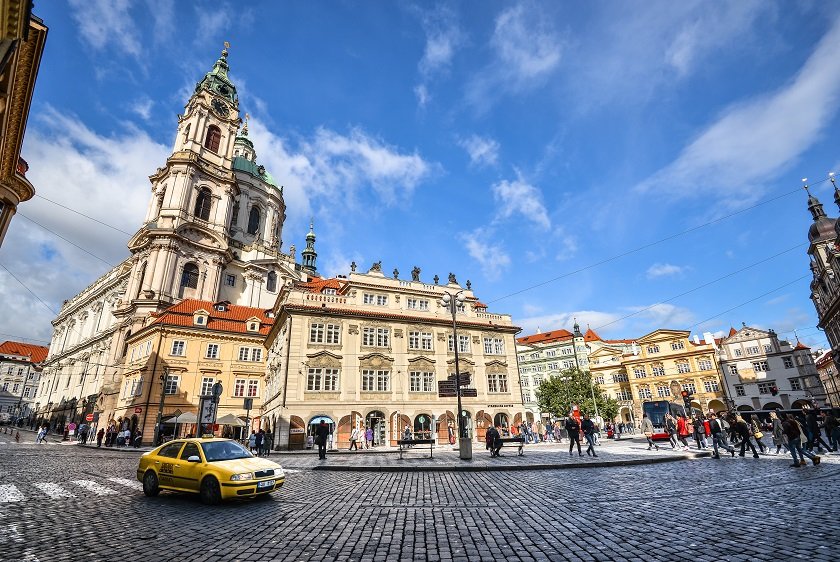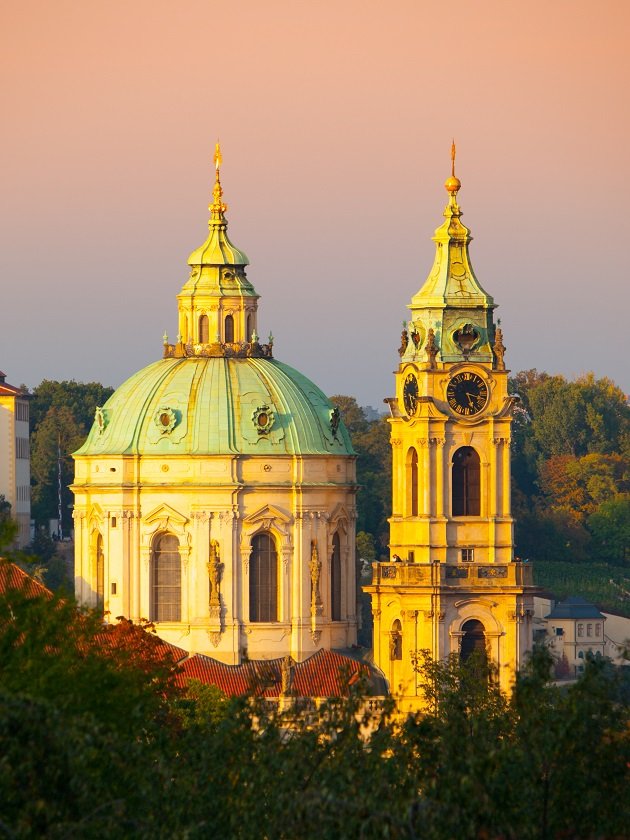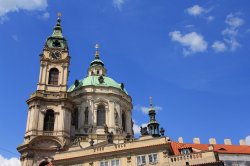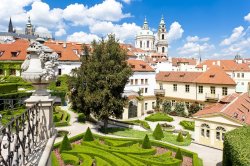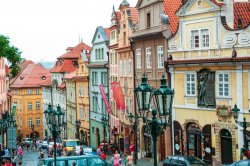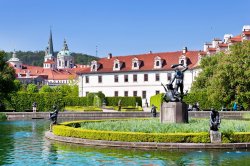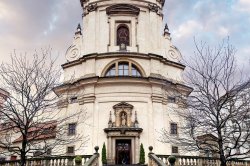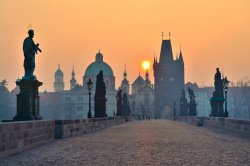Lesser Town Square
The Lesser Town Square (Malostranské náměstí) is one of Prague’s oldest squares and is considered the centre of the Lesser Town district. The dominant Baroque Church of St Nicholas and the Jesuit profession house divide the square into two parts. The upper end of the square is connected with Nerudova Street, which leads up to Prague Castle; the lower end leads to Charles Bridge. There used to be a market before the creation of the Lesser Town Square in the 13th century. The original early Gothic buildings did not survive the fire of 1541 and were replaced with magnificent residences built for the richest residents of the Lesser Town. These were later rebuilt in Baroque and Renaissance styles. Over the centuries, the square was renamed several times – from Rynk to Štěpánské Square, Radecké Square, etc. The coronation processions of Bohemian kings used to pass through the Lesser Town Square. During the Austria-Hungary period, the highest provincial authorities had their seat there.
Useful information for visitors
Public transport connections
Opening hours and admission
The Lesser Town Square is freely open to the public. An admission fee is required to tour some of the sights near the square.
Interesting facts about Lesser Town Square
HISTORICALL SIGHTS IN LESSER TOWN SQUARE
Church of St Nicholas – a Baroque building consecrated in 1238.
Lesser Town Hall (Malostranská beseda) – a late Renaissance building rebuilt from the ruined house of Jan Tovačovský of Cimburk.
Liechtenstein Palace – built on the site of several 15-century houses by order of Karl I, Prince of Liechtenstein, Vice-regent of Bohemia (he ordered the execution of 27 Czech lords in the Old Town Square).
Hartig Palace – a three-storey building built by one of Charles IV’s officers in 1370.
At the Black Eage – a high Baroque building
Holy Trinity Column – a high Baroque column built after the end of a plague epidemic in 1713.
Grömling Palace – built for a lawyer of the same name on the site of four old merchant houses.
Smiřický Palace – rebuilt in Baroque style in the 18th century. Today, it is one of the buildings used by the Chamber of Deputies of the Czech Republic.
Šternberk Palace – After the fire of 1541, which destroyed the entire Lesser Town, it was forbidden to expand the building. The noble Sternberg family thus connected the palace with the next-door Fux House in the 17th century. Today, it is one of the buildings used by the Chamber of Deputies of the Czech Republic
